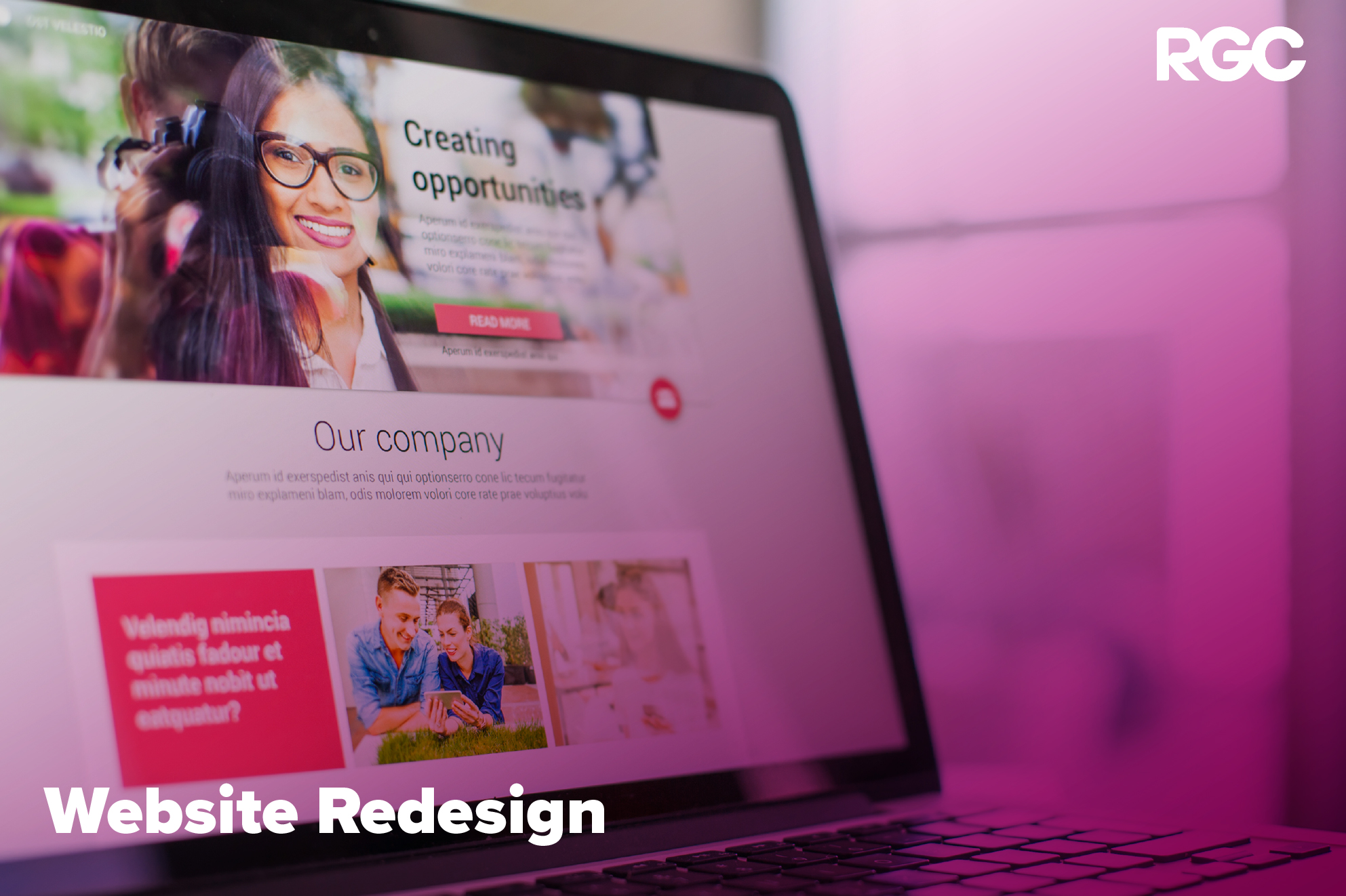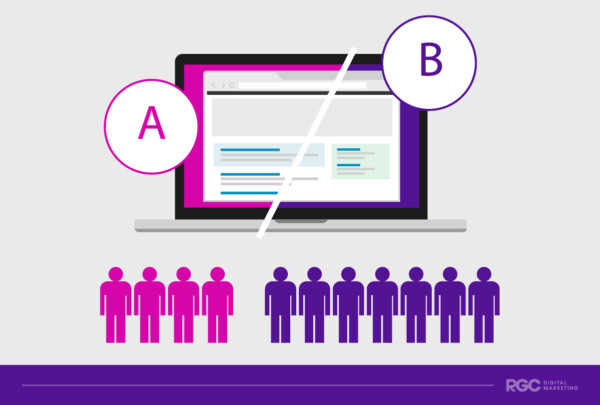How A Website Redesign Can Increase UX & Conversions

Table of Contents
- What Is An Effective Website Redesign?
- Understanding The Impact Of UX On Conversions
- What Are The Key Factors In UX-Based Website Redesigns?
- Improving Site Navigation & Structure
- Enhancing Website Speed & Performance
- Leveraging Visuals & Content For Better Engagement
- Utilising Call-To-Actions (CTA) Effectively
- Prioritising Accessibility & Inclusivity
- Continuous Testing & Optimisation
- What Are Some Common Mistakes To Avoid When Redesigning A Website?
- Set Your Small Business Up For Success With Quality UX Considered Web Redesign Services
In today’s era, a business’s website acts as its storefront, serving as the initial point of contact for many potential customers. Because of this, it is crucial to emphasise the significance of having a well-crafted and user-friendly website. A redesign that concentrates on enhancing user experience (UX) and boosting conversion rates can have an impact on a business’s success in its industry.
What Is An Effective Website Redesign?
An effective website redesign should prioritise simplicity and ease of use to ensure that visitors can effortlessly navigate the site and access the information they seek. The incorporation of design is essential to guarantee that the website functions across different devices ranging from desktop computers to smartphones. In fact, good website design can improve time on a site by 84%. By optimising aspects such as layout, loading speed and content arrangement, businesses can establish an enjoyable browsing experience that encourages customers to both linger and engage more deeply.

A strategic redesign should aim at harmonising the website’s appeal with the brand’s identity to create a memorable online presence. By including prompts, calls to action and optimising the layout of web pages, businesses can lead customers toward their desired outcomes like completing a purchase or subscribing to a newsletter, ultimately boosting their conversion rates.
Through the use of data analysis and feedback from users, companies can pinpoint areas needing improvement and customise their redesign efforts to cater to the preferences and requirements of their target audience. This data-focused approach ensures that the revamped website not only appears appealing but also effectively fulfils its intended objectives.
Revamping a website is often an essential tool for enhancing user satisfaction and increasing conversions. By concentrating on user-friendliness, design elements and strategic enhancements, businesses can establish a presence that captivates, engages and converts visitors.
Understanding The Impact Of UX On Conversions
Before delving any deeper into the specifics of revamping a website, it’s important to grasp the connection between user experience and conversion rates. A great user experience directly correlates with conversion rates. Websites that are easy to navigate, load quickly and are visually appealing tend to keep visitors interested for longer periods, thus increasing the chances of turning them into customers.
If the user’s experience is a bad one this can result in bounce rates and missed opportunities for sales. An essential element of a website redesign involves incorporating UX design. Given that most internet traffic originates from mobile devices, having a website that adapts smoothly to different screen sizes is no longer just a choice but an absolute necessity.
Responsive design not only boosts user experience but also enhances SEO rankings since search engines such as Google tend to prioritise websites that are mobile-friendly. As a matter of fact, 85% of consumers believe a company’s mobile website should be at least as good, if not better, than its desktop website.

What Are The Key Factors In UX-Based Website Redesigns?
Improving Site Navigation & Structure
A well-structured website with intuitive navigation is essential for guiding users to the information or products they seek. During a redesign, consider simplifying the menu by using clear and descriptive labels, and ensuring that the most important content is easily accessible. This approach reduces user frustration and supports a smoother journey towards conversion.
Enhancing Website Speed & Performance
Having a fast website is crucial for keeping users happy and boosting conversion rates. Even a short delay in loading pages can lead to more people leaving the site and fewer conversions happening. When revamping a website, making images load faster using browser caching and reducing the amount of CSS and JavaScript can speed up the site making it feel better for users and once again increasing CRO.
Leveraging Visuals & Content For Better Engagement
A website’s design and content are crucial for drawing in and keeping visitors engaged. Using original images and videos that are of good quality combined with compelling content tailored to your audience will also work to enhance the appeal of a website. When revamping a site, prioritise a layout that allows for this. Offer clear informative content that meets the expectations and preferences of your audience.
Utilising Call-To-Actions (CTA) Effectively
CTAs are crucial elements that guide users towards taking a desired action, such as making a purchase or signing up for a newsletter. A website redesign offers the opportunity to reassess and optimise the placement, design, and messaging of CTAs. Ensuring that CTAs are visible, compelling, and relevant to the content can significantly increase conversion rates.
Prioritising Accessibility & Inclusivity
Accessibility and inclusivity are increasingly important in web design. A redesign should ensure that the website is usable by all people, using techniques such as keyboard navigation, screen reader compatibility, and appropriate colour contrast. Making your website accessible to a wider audience not only improves UX but also expands your potential customer base.
Continuous Testing & Optimisation
A successful website redesign is not a one-time project but an ongoing process of testing and optimisation. Utilising A/B testing to compare different design elements and analysing user behaviour through analytics can provide insights into what works best for your audience. Continuous improvement based on data-driven decisions means that the website remains effective in delivering a superior user experience and achieving high conversion rates.

What Are Some Common Mistakes To Avoid When Redesigning A Website?
When it comes to revamping a website, it’s a project that can really boost the site’s performance, user experience and conversion rates if done right. 88% of people will leave your site and go to a competitor’s site if their experience during use isn’t as they were expecting. There are some traps that businesses and designers should watch out for to make sure the redesign goes smoothly and brings success instead of setbacks. Here are a few key errors to avoid when giving your website a makeover:
- Forgetting About The Target Audience: It’s important not to lose sight of your target audience’s wants and desires during the redesign process. Each choice, from the design layout to the content, should be focused on meeting the user’s needs to ensure that the revamped site connects with and serves its intended audience well.
- Ignoring Mobile Friendliness: Nowadays a large chunk of web traffic comes from mobile devices. If you don’t have a design that adjusts smoothly to various screen sizes, you could end up turning many users and hurting your search engine rankings.
- Disregarding Website Loading Speed: A website that takes forever to load can annoy visitors and lead them to leave. It’s essential to optimise images, streamline code and use browser caching to enhance site speed and overall performance.
- Neglecting SEO Best Practices: When redesigning a website it’s important to consider how it might impact search engine rankings if SEO aspects are overlooked.
Making sure to maintain URL structures, redirect pages properly, indexing, and optimising content and meta tags are all key steps in preserving and boosting SEO performance.
- Underestimating The Significance Of Content: Content plays a huge role on any website. Having outdated or irrelevant content can harm the overall user experience.
During the redesign process, it’s important to conduct a content audit to refresh, remove or add content as necessary to keep it valuable and engaging for users.
- Complex Design & Navigation Issues: One common error is complicating the design and navigation in an effort to appear cutting edge. A cluttered design can overwhelm users, while intricate navigation can hinder their ability to locate what they need. Striving for a user design that improves usability is key.
- Neglecting Testing & Feedback Collection: Releasing a redesigned website without testing or gathering user feedback could result in missed opportunities for enhancement. Utilising usability testing, A/B testing and gathering feedback from users can offer insights on how to optimise the site for improved performance.

Diving into a redesign without setting clear goals and metrics can make it challenging to measure success and see the true impact of your efforts. By pinpointing specific, measurable objectives around user experience, conversion rates, and vital performance indicators, you’re not just guiding your redesign; you’re equipping yourself with the tools to accurately assess its influence and effectiveness.
Set Your Small Business Up For Success With Quality UX Considered Web Redesign Services
Investing in web design services is a wise strategic choice for savvy small business owners. A custom-designed website by a skilled web design agency not only sets you apart in the digital landscape, but also works to establish your credibility, enhance your visibility, and contribute to delivering a lasting and positive impression. When considering a web design with UX at the forefront, you’re one step closer to giving your business the best chance at success.
Plus, reaching out to a multi-disciplinary digital marketing agency will give your small business access to a team of professionals who are ready to optimise your web design and every other aspect of your website. Remember, your website is more than an online placeholder; it’s an ever-evolving platform to showcase your services, a reflection of your brand’s identity, and a gateway to expanding your customer base. Embrace the power of professional web design services and watch your small business thrive.


